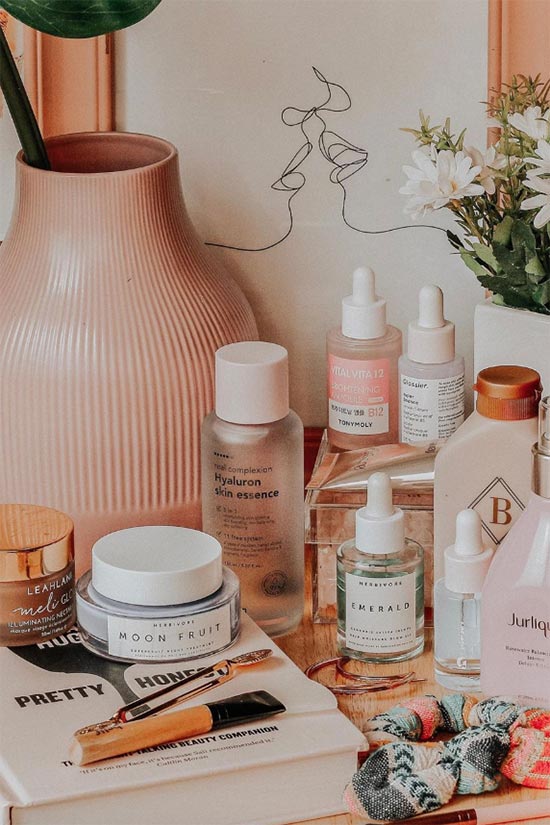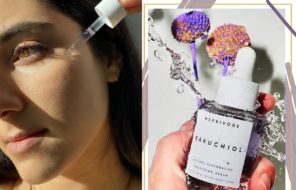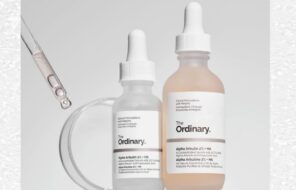I think face oils are the most misunderstood products in modern skincare history. The return to facial oils has only started recently, but some people are still afraid. Brands still advertise products as “oil-free” as though that’s desirable (hint: it’s not), and people avoid these miraculous natural ingredients as though they were the plague.
We’ve dedicated articles to specific types of oils that show up in skin care, including rosehip oil, coconut oil, and hemp oil, and we’ve also written a bit about things you can do with oils, like oil cleansing. Today, however, we examine the face oil category as a whole.
In this article, we talk about what facial oils are, and what they’re used for in skin care. We explain the benefits of facial oils as a whole, and then get into the specifics. What are the attributes that make facial oils unique? How do you choose the best facial oil for you? How do you even use face oils? We cover all these questions in this comprehensive guide!
In this article:
- What Is Face Oil Used for?
- All the Benefits of Using Face Oil
- Important Face Oil Characteristics
- Are Essential Oils Face Oils?
- How to Choose the Best Facial Oil for Your Skin Type
- How to Choose the Best Facial Oil for Different Skin Concerns
- How to Use Face Oil
- Safety First: How to Patch Test Facial Oils
What Is Face Oil Used for and What Does It Actually Do?
Face oils are either mixtures of oils or single oils that have a variety of benefits when applied to the skin as a skincare product. Most of these oils are derived from seeds, nuts, and fruits of plants. They are comprised primarily of fatty acids, with a few other compounds known as “unsaponifiables” that hold their own benefits for the skin.
In this article, I mostly talk about traditional plant oils, as those make up the bulk of facial oil formulations, but there are other types of lipids that are often referred to as oils even if they technically aren’t. These include jojoba oil, which is technically a wax, squalane, which is a hydrocarbon, and MCT oil, which is made of coconut-oil derived triglycerides.
It’s important to note that while facial oils do soften and moisturizer the skin, they are not good moisturizers on their own because they do not hydrate. Once the skin is already a little hydrated, facial oils can help lock some of that moisture in place and prevent trans-epidermal water loss.
However, if the skin is dehydrated from the start, there is not much that face oils can do. That is why it is so important to use facial oils in conjunction with hydrating essences, serums or lotions that contain some water along with water-binding ingredients like glycerin, hyaluronic acid, butylene glycol and panthenol.
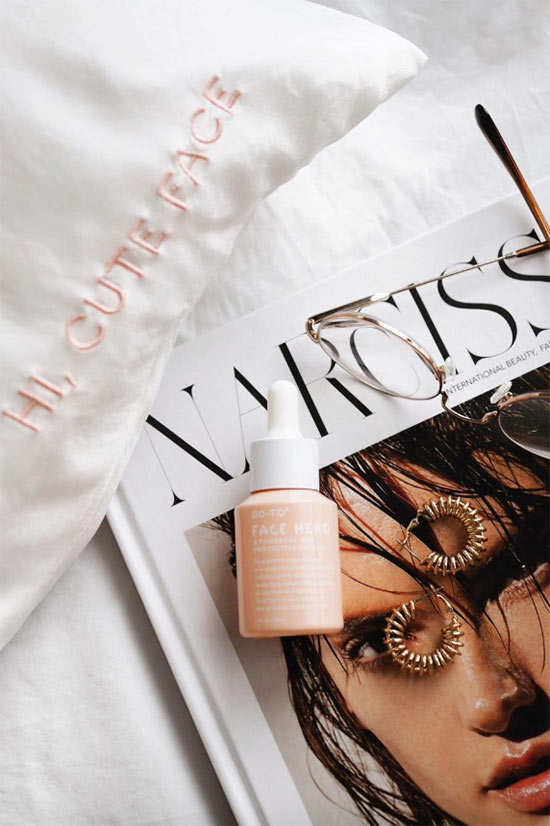
All the Benefits of Using Face Oil
There are a number of benefits your skin gets from the right face oil you’ll use based on your skin type and concern.
• Face Oils Are Emollient
The main benefit of facial oils is that they are, across the board, emollient. An emollient ingredient sinks into the stratum corneum (the protective top layer of skin that is composed primarily of dead skin cells) and fills in gaps between the cells. By filling in the gaps, face oil makes the skin softer, smoother, less fragile, tougher to penetrate, and more flexible.
• Facial Oils Can Lock in Moisture
While this is not true for all facial oils, many of them do possess occlusive capabilities that allow them to prevent moisture loss. After a shower or after using a hydrating serum or light lotion, a face oil will help keep that moisture in the skin and prevent trans-epidermal water loss.
• Antioxidant Protection
Almost all plant oils contain different antioxidant compounds – reddish oils are rich in beta-carotene, others are rich in vitamin E, while others might contain other flavonoid compounds. Antioxidants help prevent fine lines and hyperpigmentation by taking on the environmental damage that causes premature (i.e. extrinsic) aging.

• Face Oils Are Soothing
Just by virtue of moisturizing and strengthening the skin barrier, facial oils already have a skin-fortifying effect that can counter irritation and inflammation. However, beyond that, many face oils also possess intrinsic anti-inflammatory effects, whether from the types of fatty acids in them or from some of their unsaponifiable ingredients.
• Facial Oils Are Delivery Method
Different kinds of facial oils penetrate into the stratum corneum at different levels, and with them they bring other compounds that are beneficial to the skin, like the antioxidants I mentioned earlier. Many commercial face oils will contain additional active ingredients, like vitamin E and retinol, which penetrate into the skin slowly but thoroughly thanks to the base they’re in.
Face oils rich in oleic acid will penetrate a bit more quickly and deeply (though they are also likelier to cause breakouts), but almost all commercial oils are light enough to penetrate somewhat.

• Protective
Face oils are able to fill in the gaps between the cells of the stratum corneum, thereby making the skin a stronger, suppler barrier. They are able to protect the skin from all kinds of damage by keeping bad stuff like bacteria out, and keep good stuff like water inside!
• Healing
Research on a variety of botanical oils has shown that they have the ability to promote wound healing. These tests are usually done on animals rather than humans, but it is safe to assume that the antioxidant, anti-inflammatory and emollient properties mean that they will also promote wound healing in humans. They are not replacements for traditional first aid, but facial oils can certainly help speed up healing of compromised skin.
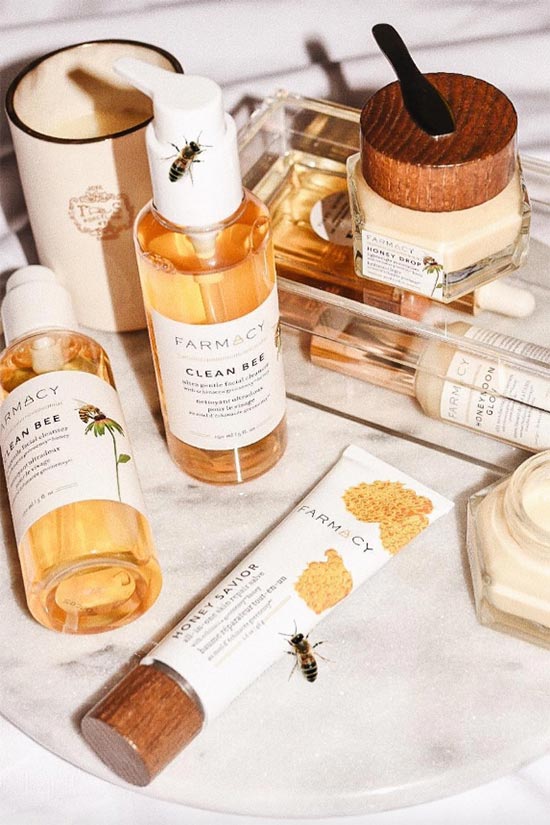
• Anti-Acne
While not all facial oils are going to help with breakouts, many of them will, with rosehip oil in particular being a fabulous acne fighter. Oils high in linoleic and alpha-linoleic acid will help moisturize and fortify your skin’s barrier, helping to prevent infections, and their anti-inflammatory properties will help heal active breakouts.
Some face oils even have antimicrobial properties, so they can help prevent the acne bacteria from spreading on the skin. Don’t be afraid of oils just because you have acne!
• Clean Formulations Without Preservatives or Emulsifiers
In general, I don’t think preservatives and emulsifiers in cosmetics should warrant much concern, but I know that many people try to avoid them for a variety of reasons. One very legitimate reason is that if your skin is very sensitive or finicky, products with longer ingredient lists are likelier to irritate. Facial oils, especially ones made up of only one or two oils, are stable on their own and don’t require preservation, making them simple and extra gentle.
Important Face Oil Characteristics
So what are the main characteristics of facial oils you should pay particular attention to?
Fatty Acid Composition
Since most face oils are primarily composed of fatty acids, their unique fatty acid composition is probably the most important detail to pay attention to. This is doubly true if you have sensitive or acne-prone skin, as certain fatty acids have specific benefits while others are going to be particularly problematic.
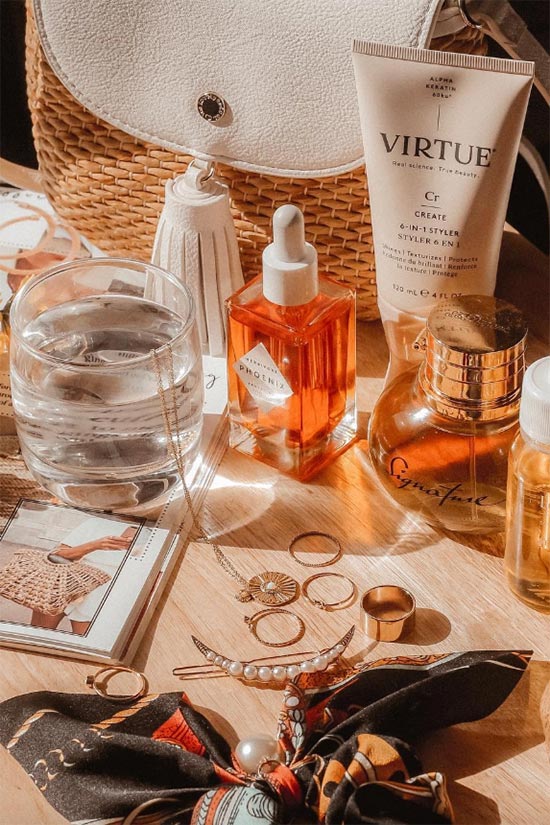
Each face oil is usually composed of around 4-8 different kinds of fatty acids, but one or two of these fatty acids will make up the bulk of the composition. In some instances, you will see oils show up twice or even three times because they hold significant quantities of these fatty acids.
I haven’t listed all fatty acids that you find in facial oils here – just the most common or influential ones that show up in significant percentages in face oil.
• Linoleic Acid
Also known as omega-6 or polyunsaturated fatty acid, this is an essential fatty acid which means our bodies cannot produce it on its own. It is so great that I wrote a whole article about linoleic acid!
There was a sebum-analysis study that compared the fatty acid profile in the sebum of young men with acne and without. The discovery was that young men suffering from acne had very little linoleic acid in their sebum compared to those not suffering from acne. From this we can reach the conclusion that facial oils rich in linoleic acid will be better for those with acne-prone skin, and might even help to reduce breakouts.
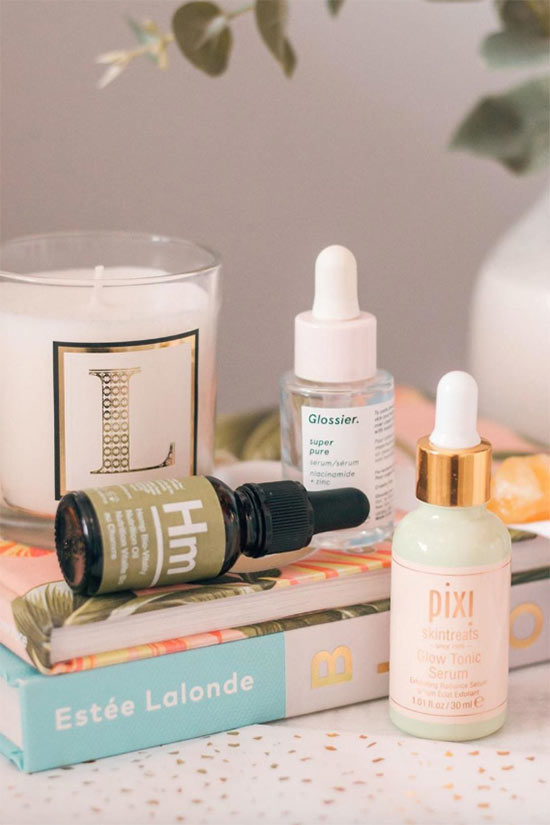
Additional studies have shown that pure linoleic acid can reduce acne occurrences when applied to the skin! This is likely because linoleic acid has an anti-inflammatory effect that helps fade blemishes quickly. Linoleic acid is most frequently recommended for those with oily and acne-prone skin, but it is actually great for all skin types, since it has skin-restoring and softening effects.
Face oils rich in linoleic acid include cosmetic grade sunflower oil, safflower oil, grape seed oil, evening primrose oil, hemp seed oil, sea buckthorn seed oil, passion fruit oil and many more.
• Oleic Acid
Oleic acid is a type of omega-9, a monounsaturated fatty acid. This fatty acid is very interesting because it has some seemingly contradictory properties.
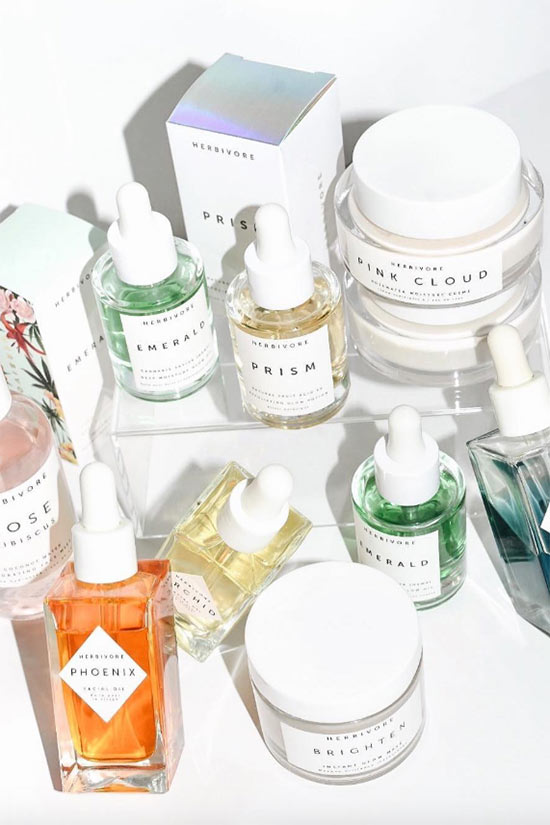
On the one hand, oleic acid can have a healing effect on broken skin, while on the other hand it slightly disrupts the skin barrier of intact skin in a way that can be either beneficial or harmful depending on the circumstances. The disruptive effect makes it an excellent delivery system for other beneficial compounds, since it can sink more deeply into the skin.
However, facial oils with very high concentrations of oleic acid can be irritating to acne-prone or sensitive skin. This fatty acid works best for those with dry but non-sensitive skin, and is best in face oils that also include at least some linoleic acid. Oils with a lot of oleic acid tend to have a longer shelf life than a lot of other botanical oils, which is why they are more popular in cooking.
Oils rich in oleic acid include olive oil, marula oil, avocado oil, camellia oil, sweet almond oil, apricot oil, and most food grade oils.
• Alpha-Linolenic Acid
Alpha-linolenic acid is the much-celebrated omega-3, and like linoleic acid it is also a type of polyunsaturated fatty acid. It is often shortened to ALA.
Like linoleic acid, it is also ‘essential,’ meaning that our bodies do not produce it on its own. We need it as part of our diet, and it’s also great in our skin care. Beyond its ability to soften and moisturize the skin, ALA is also remarkably skin-soothing and is excellent for all skin types.
ALA will very rarely make up more than half of the fatty acids in a face oil, but it is meaningful and beneficial even in low concentrations since it is very healing and soothing to the skin.
Oils rich in ALA include flax seed oil, chia seed oil, sea buckthorn seed oil, hemp seed oil, as well as many exotic and harder-to-find oils.
• Gamma Linolenic Acid
GLA is also an omega-6 fatty acid. Like linoleic acid, it also seems to have some very well-documented anti-inflammatory capabilities. It is often present in facial oils that contain high amounts of LA and ALA, and amongst them evening primrose oil in particular shows some incredible benefits for sensitive skin.
Oils rich in GLA include borage seed oil, black-currant oil, and evening primrose oil.
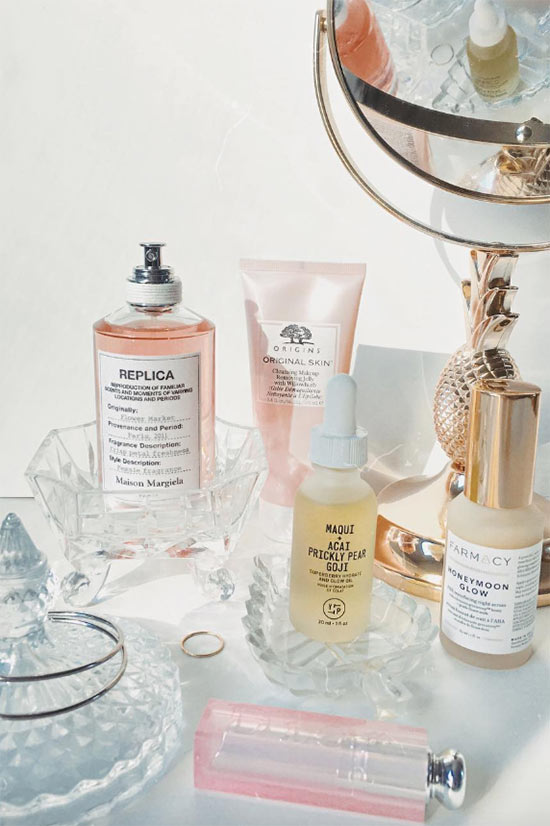
• Stearic Acid
Stearic acid is a saturated fatty acid, so it is not particularly healthy to eat. However, on the skin it is wonderfully thick, moisturizing, and occlusive. It is more common in thick facial oils and plant butters that are solid at room temperature. Its comedogenicity rating is fairly low, and yet it seems to break some people out, so it is best for those with dry, non-acne-prone skin.
Oils rich in stearic acid include coconut oil, shea butter and cocoa butter.
• Palmitic Acid
This is a saturated fat similar to stearic acid. It is slightly thicker in texture than other fatty acids, but it is unlikely to cause breakouts. It has a wonderful softening effect on the skin, and is better for oily skin types.
It usually shows up in lower concentrations in facial oils, and naturally occurs in the human body. Palmitic acid is best for those with dry skin.
Oils rich in palmitic acid include palm oil, pumpkin seed oil, rice bran oil, and neem seed oil.

• Palmitoleic Acid
Also known as omega-7, palmitoleic acid is a monounsaturated fatty acid that seems to have excellent skin-soothing and healing properties. Studies have shown that much like LA and ALA, this fatty acid has the ability to speed up wound healing and strengthen the skin.
It usually shows up in botanical oils in fairly low, but still beneficial percentages. It is found in macadamia oil, hazelnut oil, avocado oil and in sea buckthorn fruit oil.
Unsaponifiables in Facial Oils
Beyond fatty acids, facial oils have other ingredients that make them amazing for the skin. These ingredients are called “unsaponifiables” because, like fatty acids, they cannot be turned into soap. The variety of different additional compounds is hard to put into writing, especially because they are so diverse, but I will talk about some of the important sub-categories.

There are all kinds of compounds that count as unsaponifiables, including oil-soluble vitamins like vitamin A and vitamin E, polyphenolic compounds, terpenoids, and phytosterols, which are sometimes precursors to certain vitamins. These compounds are responsible for many additional properties that certain oils have.
Many vitamins and phytosterols act as antioxidants in face oils, making them more protective against photoaging. Tannins, which are specific phenolic compounds, have an astringent effect that helps tighten the skin and gives certain oils a drier skin-feel.
Many unsaponifiable blends also show anti-inflammatory properties that mean they help heal the skin and soothe certain kinds of irritation.
Are Essential Oils Face Oils?
Despite the name, essential oils are not really oils at all, and they have absolutely nothing to do with botanical oils or essential fatty acids. The word “essential” in essential oils actually refers to the essence of the plant from which they are derived.
In cosmetics, essential oils are basically fragrances, although many of them also have some anti-inflammatory, antioxidant, and antimicrobial properties that can be beneficial. Often, essential oils will be added to a face oil formula primarily in order to mask the unpleasant scent that most botanical oils have.
You will notice that essential oils are always listed at the very end of an ingredient list, meaning that they make up a very tiny percentage of the formula – this is because they are very potent and should only be used at a very low concentration if applied to the face.
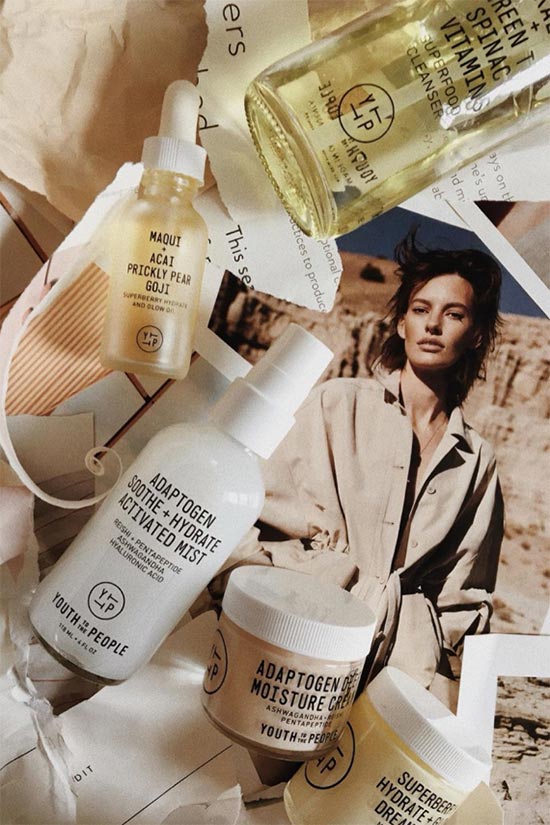
Essential oils are fairly likely to cause irritation, especially after consistent exposure, which is why those with sensitive skin should be careful with them.
How to Choose the Best Facial Oil for Your Skin Type
Once you know your skin type and decide to add face oil to your routine, here is what you should consider!
Best Facial Oils for Oily Skin
If it seems like your forehead is shiny even an hour or two after washing your face and your pores are on the larger side of things, then it’s a pretty sure sign that you have oily skin. Acne and easily clogged pores are frequent companions to oily skin, though they can also show up on other skin types so I don’t address acne in this section – jump on down to the skin concerns section to learn about the face oils that are best for acne-prone skin.
Those with oily skin often stick to oil-free formulas, but that’s actually quite unfortunate. Many oils are great for oily skin! As long as the oil you choose has a light texture, it will sink into your skin quickly, will not clog your pores, and will help moisturize and nourish your skin. If you have oily skin, you will likely want to use facial oils at night, as in the daytime they might take too long to sink in.
Oils rich in tannins, however, will have a drier texture and a more astringent effect on the skin, so you might even be able to use them in the daytime. The prime example of this is grape seed oil, which is a little bit mattifying – often to the point where it’s too drying for those with dry skin!
Best face oils for oily skin include grape seed oil, sunflower oil, castor oil, hazelnut oil, pomegranate oil and evening primrose oil.

Best Facial Oils for Dry Skin
If you have dry skin you’re probably already well aware: your skin doesn’t produce much sebum, so it looks a little dry and dull unless moisturized. Those with dry skin also tend to have small pores, and they are much more prone to flakiness and dehydration.
The best facial oils for dry skin are ones that will mimic the sebum that the skin does not produce enough of. Oils with a good amount of oleic acid balanced out by some lighter fatty acids are fabulous as they ensure that the skin will take in a maximum amount of that good stuff.
Heavier saturated fatty acids like stearic acid and palmitic acid are also fabulous. Squalane and jojoba, which are technically not oils, are also really good choices, as each one of them mimics certain elements that occur naturally in human sebum and really helps to restore the skin’s barrier functions, which are likelier to be compromised when the skin is dry.
An oil blend with a large amount of oils that have different fatty acid compositions will almost always be a great choice for those with dry skin. You may want to avoid facial oil blends heavy on oils high in astringent tannins like grape seed oil.
Best face oils for dry skin include sweet almond oil, apricot oil, jojoba oil, coconut oil, argan oil, squalane, and many many more.
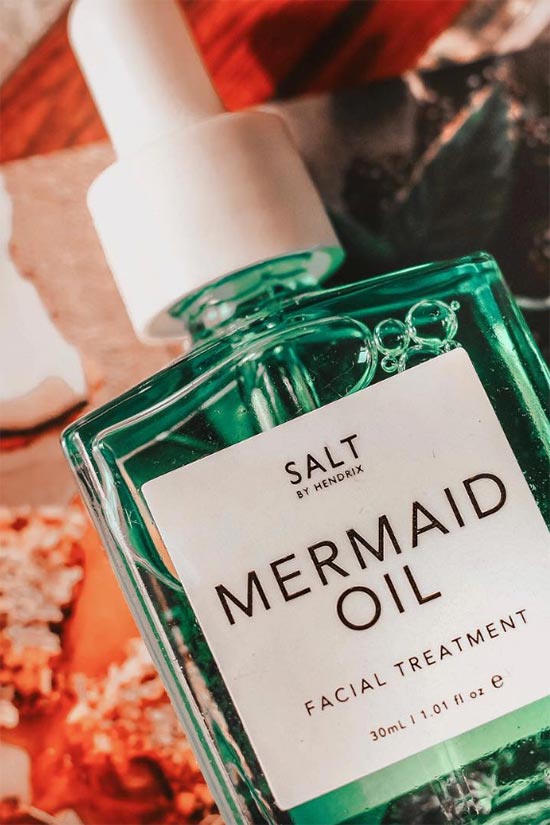
Best Facial Oils for Combination Skin
Those with combination skin will usually have an oilier T-zone with larger pores, and drier cheeks with smaller pores. Sometimes the distribution of oiliness and dryness is different, but that is the most usual split.
Skin care can be tough to figure out when you have combination skin, since some parts of the face require heavier ingredients, while other parts of the face will get greasy or broken out.
You can use most lighter facial oils (the ones that work well with oily skin) all over your face, since they will nourish both the dry and oily parts beautifully. Oils high in oleic acid or saturated fatty acids should only be used on the parts of your face that are a little drier.
Best face oils for combination skin include sunflower oil, rosehip seed oil, hemp seed oil, and squalane.
Best Facial Oils for Normal Skin
Normal skin is kind of a myth, referring to the perfectly balanced skin type that produces just the right amount of sebum, and with a bunch of even, small-to-medium sized pores. In reality, normal skin might be better described as a moment of balance for those with combination skin.
If your skin indeed does not skew in either direction, you will want to stick to medium face oils that will contain higher quantities of linoleic or alpha-linolenic acid, but with a bit of oleic acid for enhanced skin penetration.
You can focus on choosing facial oils based on your specific skin concerns, instead. Oils high in antioxidants to counter the sigs of photoaging, for example, are a good preventative choice even if you don’t have any particular concerns.
Best face oils for normal skin include balanced blends of oils with a mixture of both polyunsaturated fatty acids as well as other fatty acids.
How to Choose the Best Facial Oil for Different Skin Concerns
Other than your skin type, you might also want to watch out for certain skin concerns while trying to find the best face oil for you.
Best Facial Oils for Sensitive Skin
People with all skin types can also suffer from sensitive skin; i.e. skin that becomes easily irritated or inflamed. There are also different kinds of skin conditions, like rosacea or dermatitis, that make the skin more prone to irritation.
Generally, those who have sensitive skin will tolerate facial oils quite well, as long as they choose oils that are a good fit for their skin type and in formulations that are simple and low on fragrances and essential oils.
Some folks with sensitive skin will do quite well with certain anti-inflammatory essential oils like lavender or chamomile, while others will react very badly to them. That’s why it’s important to always be careful with fragrant ingredients.
Certain compounds in face oils (especially antioxidants and fatty acids like linoleic acid and alpha linolenic acid) actually have an anti-inflammatory effect that will calm and soothe your skin when you’re having a flare-up of some sort.
You will want to avoid face oils that are very high in oleic acid, as that may compromise your skin, though if the facial oil is balanced out by oils high in other fatty acids it will probably be okay.
It’s always very important to conduct a patch test before trying new skin care products, but that is doubly true if you have sensitive skin.
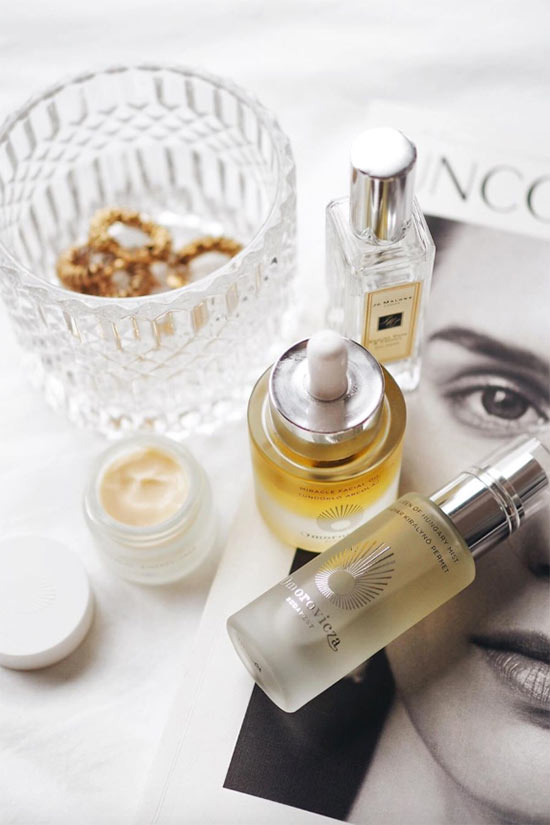
Best facial oils for sensitive skin include sunflower oil, coconut oil, squalane oil, MCT oil, evening primrose oil, hemp seed oil, sea buckthorn fruit and seed oil.
Best Facial Oils for Hyperpigmentation
Hyperpigmentation refers to irregular pigmentation in the skin caused by overactive melanocytes. It is usually caused by sun exposure or as a response to skin trauma. It can also be genetic and just show up as a natural part of skin aging.
The best treatment for hyperpigmentation is vitamin C. Lots of sources will tell you that a certain oil actually contains vitamin C, but that can’t be true – vitamin C is not oil-soluble so it does not occur naturally in botanical oils. However, there are certain forms of vitamin C that can be synthesized and then added to face oils – I’ve included a few oils like that in the list at the top.
Beyond vitamin C, there are other compounds that naturally occur in botanical oils that can help lighten hyperpigmentation. In fact, almost all of the main fatty acids show some ability to lighten hyperpigmentation, with linoleic acid and alpha-linolenic acid being particularly effective.
Then we have the superstar oil for dealing with hyperpigmentation: rosehip seed oil. Rosehip seed oil contains a touch of tretinoin, a very powerful retinoid that is known for its ability to smoothe the skin, encourage cell renewal, and therefore reduce hyperpigmentation. Combined with the high amounts of alpha-linolenic acid in rosehip seeds, this makes for the best natural hyperpigmentation treatment.
Best face oil for hyperpigmentation is rosehip seed oil.
Best Facial Oils for Acne-Prone Skin
If your pores get clogged at the drop of a hat and you have been dealing with acne for years then you are probably a little hesitant to try facial oils. That’s fair, as it’s difficult to predict what will break someone out.
However, we do know that some face oils are much likelier to cause pimples than others, with oils high in oleic acid being particularly culpable.
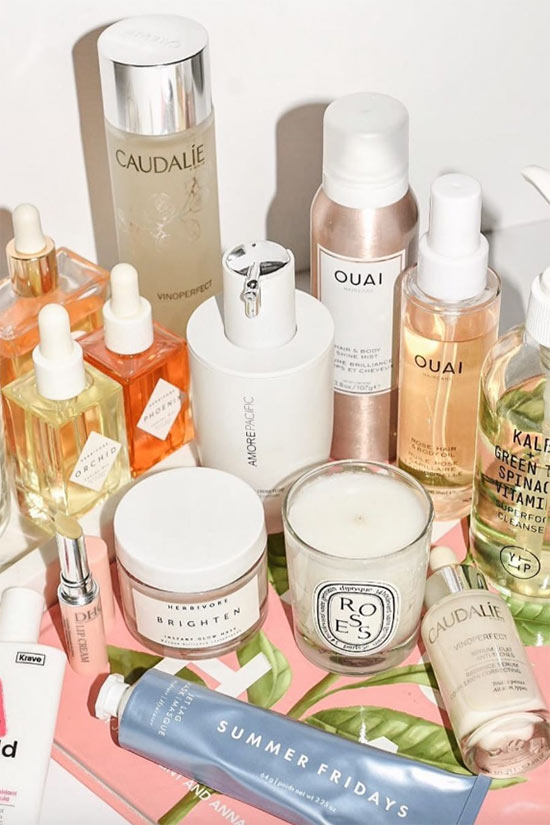
Oils high in linoleic acid and alpha-linolenic acid, on the other hand, are much less likely to clog pores – they even have anti-acne properties! These fatty acids, in addition to being non-comedogenic, also have anti-inflammatory properties that help to calm down active acne and to help heal blemishes.
You can also look for non-comedogenic facial oil blends reinforced by other acne-fighting ingredients like salicylic acid, tea tree essential oil, or retinol.
Best face oils for acne-prone skin include rosehip seed oil, grape seed oil, sunflower oil, safflower oil, evening primrose oil, and tea tree oil (technically an essential oil that should be diluted in a carrier oil).
Best Facial Oils for Fungal Infections
There are a few different kinds of skin issues that are essentially fungal infections, usually caused by a fungus called Malassezia. They include seborrheic dermatitis, dandruff, and Malassezia folliculitis (often referred to as fungal acne, which is technically incorrect but I roll with it).
The Malassezia fungi absolutely love the bulk of fatty acids that make up my favorite facial oils, including acne-safe linoleic acid. Because of this, anyone suffering from fungal skin conditions should avoid botanical oils altogether.
This isn’t to say that you must avoid face oils altogether, you just want to avoid the ones that the Malassezia fungi find delicious. This includes pretty much all plant-derived and non-chemically treated oils.
What does this leave? Mineral oil, which is a petroleum byproduct and is therefore composed of alkanes and cycloalkanes rather than fatty acids, squalene, which is the hydrogenated form of the much less stable squalene, and caprylic/ capric triglycerides (sometimes referred to as MCT oil), which are fungus-safe fatty acids derived from coconut oil.
Best face oils for fungal skin infections include squalane, MCT oil, and mineral oil.
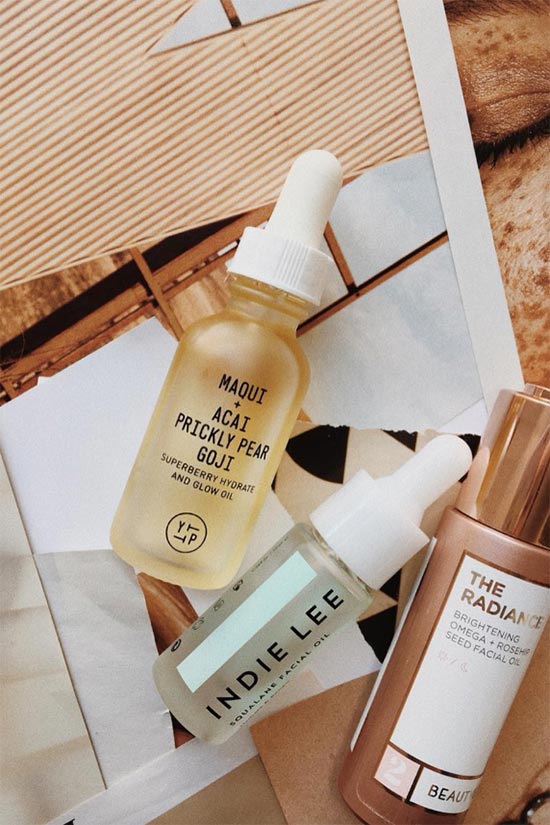
Best Facial Oils for Photoaging
While most skin aging is a natural result of aging, there is also a significant amount of it that is a direct result of sun and pollution exposure. This kind of damage, known as free radical damage, is a destructive chain reaction where incomplete molecules steal electrons from skin molecules. It is referred to as either photoaging, extrinsic aging, or premature aging.
While deep wrinkles and sagging are mostly genetics, fine lines and small wrinkles are often related to photoaging. Using sunscreen like it’s part of your religion is the most effective measure against it, but antioxidants also deserve some appreciation.
Antioxidants are these remarkable molecules that stop the damage caused by generously donating an electron and stopping the chain reaction in its tracks, thereby protecting the skin.
Face oils can be loaded with all different kinds of antioxidants, and believe me, the more, the better. All plant oils will naturally contain some antioxidants, in the form of various phytonutrients including vitamin E and beta-carotene. The best facial oils will be boosted by additional antioxidants including synthesized vitamin E or C, plant extracts, and essential oils.
Best face oils for photoaging are actually all of them, but especially rosehip seed oil, pomegranate seed oil, wheat germ oil, and the more exotic botanical oils.

How to Use Face Oil
Once you get the best face oil for your skin type and concern, there are so many ways you can use it.
Incorporating Face Oil into Your Routine
Most facial oils are not totally occlusive, so they are best used at some point in the middle or towards the end of your skin care routine, but before any heavy moisturizers or creams. For most, they are usually better to use in the evening, when shine or slow absorption is not an issue. Those with dry skin might want to use them in the morning as well.
- If it is evening, start by cleansing your skin as you normally would, making sure to thoroughly remove all traces of makeup, sunscreen, and grime from the day. As always, I recommend using a gentle, low-pH cleanser, and am a big proponent of double cleansing and oil cleansing.
- If it is morning, you can just splash your face with water or wipe it with a cotton pad saturated with a toner or essence.
- Apply any pH-dependent skin care products that should usually be closer to the skin, such as vitamin C serums or chemical exfoliants.
- Apply your light and hydrating essences, serums, or emulsions with a gentle massage or tapping motion.
- Now is the fun part! Dispense a few drops of your face oil into your hand, and then rub both hands together to warm it up. Apply it into your skin in circular, outward motions and with just a little bit of pressure.
- Once your skin has absorbed the oil, you can apply a layer of a heavier moisturizer if you like, or simply enjoy the face oil glow.
- If it is daytime, make sure to finish by applying a final layer of SPF.

Occlusion
Most face oils are intended to nourish the skin and they are not overly occlusive. However, facial oil blends that also contain silicones, lanolin or mineral oil should be used as the very final step of your skin care routine in the evening, as anything applied over them will not penetrate into your skin.
Massage them into your skin after you’ve completed your routine, in a gentle, circular massage.
Face Oils for Cleansing
We gotta admit that most of the facial oils we recommend here are simply too precious to waste on the cleansing method. They also tend to be a little too light to properly dissolve makeup. However, if you’re fancy, you can definitely use richer facial oils with heavier textures like sweet almond, sunflower or apricot oil to remove your makeup in the evening.
We wrote a whole post dedicated to oil cleansing with both homemade blends and with commercial products, but here’s the low-down:
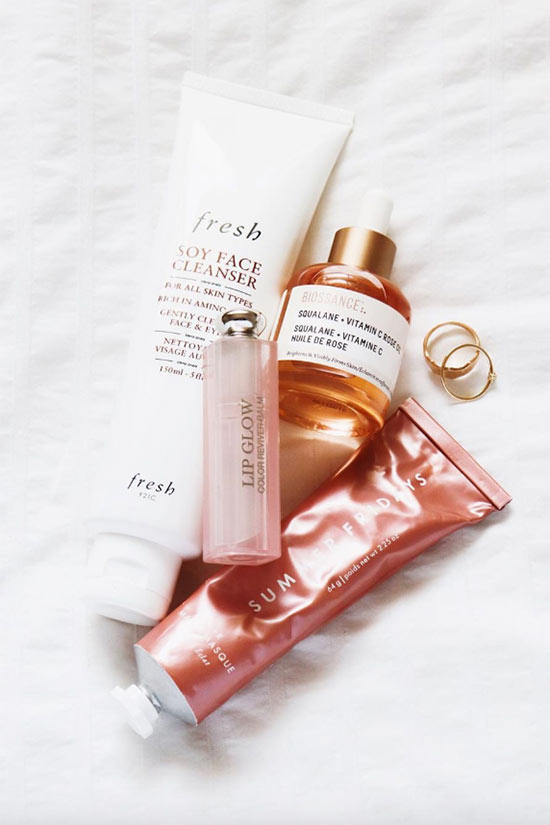
- While your skin is dry, massage about a quarter-sized amount of your facial oil into your skin, working it in for about 15-30 seconds in order to allow it to thoroughly dissolve makeup, sunscreen, and other debris.
- Use a face cloth, muslin, paper towel or cotton pads to remove the face oil as well as the debris that it dissolved.
- Especially if you have oily skin or if you wear a lot of makeup, you will want to follow that up with a water-based cleanser in order to remove the oil residue thoroughly as well as any makeup remnants that might still be on your skin.
- Follow it up with the rest of your skin care routine, as outlined above. You can even include a few more drops of your facial oil or of a different facial oil for nourishment.
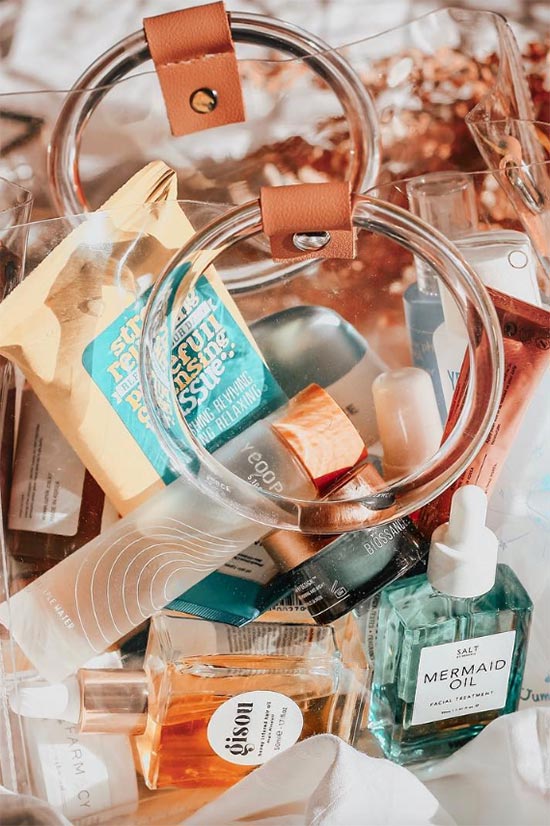
Face Oils Blended with Something Else
There are lots of products that can actually be mixed very beautifully with facial oil!
- You can add a couple drops of face oil to your moisturizer right before applying it to make it a bit richer and more emollient.
- You can also create a mix of oil with your favorite humectant serum or essence – after doing this, you could probably even use it skin moisturizer!
- If you are using actives that are a little harsh on your skin (benzoyl peroxide or tretinoin, especially), you can mix them with a bit of face oil to dilute them and reduce their chances of causing irritation. You can also apply them after you’ve applied the oil, so it acts as a buffer and slows down their penetration time.
- If your non-water-based foundation is a little too drying or cakey on your skin you can mix a few drops of oil to sheer it out and make it creamier. This won’t work with all foundations, but the ones that it will work with will look marvelous and dewy.
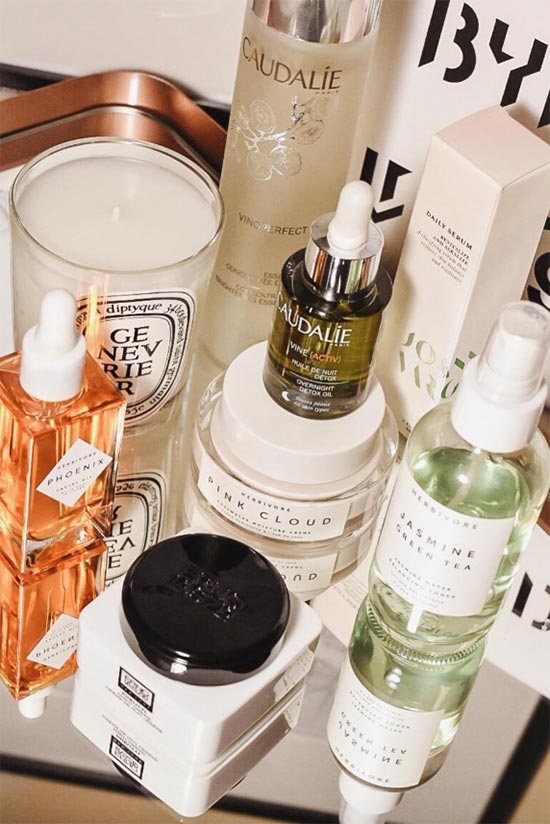
Safety First: How to Patch Test Facial Oils
Everyone should conduct a patch test before introducing new skin care products into the routine, but those with sensitive or acne-prone skin should be even more dutiful about it.
Knowing what a person’s skin will respond to negatively is hard to predict both with acne-prone and sensitive skin. A face oil that might cause one person with oily skin to break out might be fine for someone else with the exact same skin type, and the same applies to those with sensitive skin and irritation.
To patch test for sensitivity or irritation, apply the facial oil to a thin patch of skin. The inner arm and behind the ear are both good spots where potential reactions are going to be easy to hide. Do so once a day for 3 or 4 days, and if no adverse reaction occurs, the facial oil is probably going to be fine on your face.
Patch testing for comedogenicity is a little bit more difficult, since acne can be fickle, but it’s very important since predicting which face oil will work and which will cause breakouts (beyond the fatty acid composition) is difficult.
To patch test for acne, you will want to apply the facial oil on a part of your face where you would normally break out easily for a few days in a row. If the condition of your skin doesn’t change then you can move on to trying the facial oil all over your face.
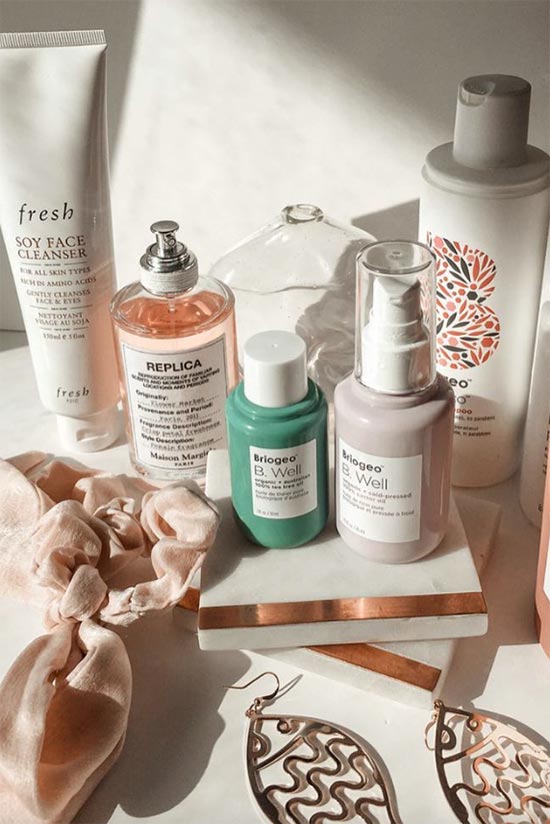
If you do find that new pimples show up, that won’t necessarily be a sign that the face oil is breaking you out. However, if you end up with blemishes on parts of your skin that don’t normally break out, or if you end up with an excessive amount of blemishes, then you can assume that the face oil might be comedogenic for you.
If you like, you can wait a week or two and then conduct the patch test again just to be sure the face oil really is comedogenic for you and that the issue wasn’t a fluke.
Photos via @sellyttn, Instagram

